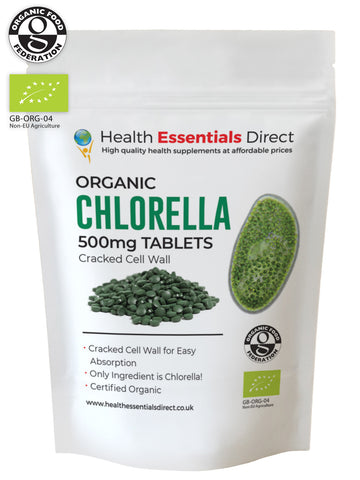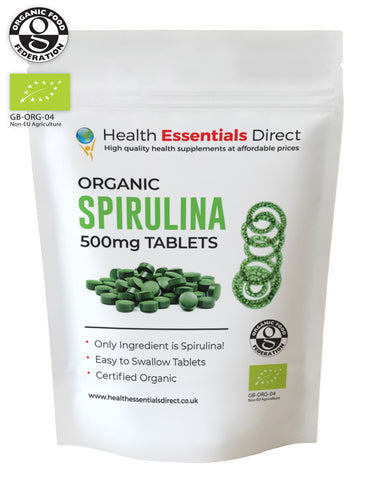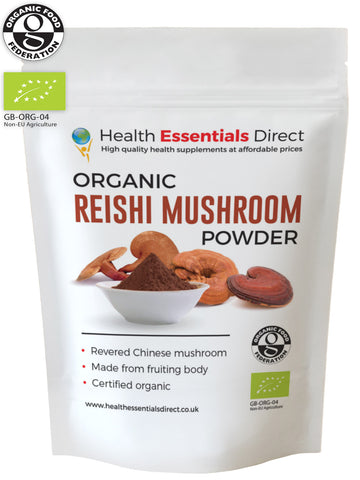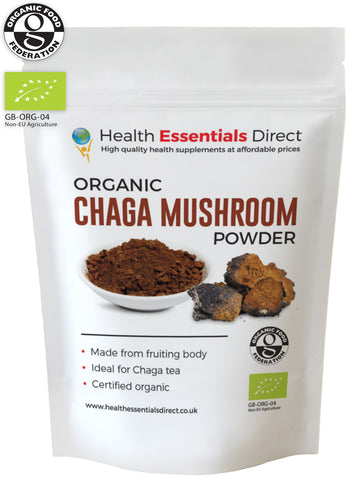Organic Raw Cacao/Cocoa Nibs (Peruvian Superfood)
2Cacao Nibs
-
Certified Organic by Organic Food Federation
-
Ideal For Adding To Home Made Chocolate
-
Ancient Aztec Superfood
About Cacao Nibs
Cacao nibs are raw pieces of cacao beans that have been prepared by being removed from their husks, roasted and broken into very small pieces. The only thing left for them after that is to be processed into chocolate bars. However, cacao nibs themselves have a high nutritional value than chocolate bars making them preferable. They can be eaten raw as well as made into smoothies. Since they have a very nice flavour they can also be added into baked products such as cakes.
The process of making cacao nibs involves couple of steps. The process is as follows:
First, the cacao pods are harvested and then sorted where only the ripe ones are picked. The ripe pods are usually orange in colour. After harvesting, they are then cut open with a knife carefully ensuring that that the white cottony part is not cut. The beans are put into a bowl and prepared for fermentation. Yeast which is a natural fermenting agent is added to aid in the process of fermentation. They are then stirred and warmed to a slightly high temperature. After warming they are covered and left for about seven to ten days. They should be checked regularly by turning to ensure that even fermenting takes place. After a week or so, they will have fermented so hard that they start producing an alcoholic smell. They are then put on trays and left to dry out in the sun. The duration of exposure depends on the speed at which they dry up. They are roasted by being put in an oven where they produce a very pleasant smell. The beans are then crushed in order to separate them from the husks and later on filtered so that the husks go on one end and the crushed beans on the other. The final product is beautiful smelling and nutritious cacao nibs.
Cacao or cocoa, as the plant is famously referred, is an evergreen tree that is cultivated for its seeds, commonly known as cocoa beans. This tree is native to the Amazon basin. Cacao (Theobroma cacao) is classified under the Malvaceae family. The word “cocoa” is derived from the Spanish word “cacao” which was in turn borrowed from the Nahuatl term cacahuatl. The term cacahuatl was also obtained from tweaking the Proto Mije-Sokean term kakawa. The cacao tree can grow to heights above 20 feet. It has long, leathery leaves that are shed from time to time. It has small clustered flowers that emerge from the trunk and have either a bad smell or no smell at all. The colour of these flowers varies from pink, red, white, and yellow.
The cacao tree fully matures after about 4 years. This is the period they start fruiting. The fruits are pods that can grow to a length of approximately 36cm. They ripen and attain different colours ranging from yellow to dark purple. The pods contain several ridges upon which the cocoa beans are firmly placed. The cocoa beans are engulfed in a white pulp that is very sweet. Cacao nibs are obtained after cacao beans are taken out of their pods, fermented, dried, and crushed into little pieces. The beans may be roasted immediately after drying or they can be sold raw. Cacao does fairly well at altitudes ranging from 40 to 320 meters above sea level. They also require adequate amounts of rainfall that is well distributed throughout the year and well-drained soils. The cacao tree can survive for over 100 years.
Cacao nibs have been in use for thousands of years. Historians claim that the various ancient civilisations cultivated and consumed this plant on a daily basis. It is believed that the Olmecs, who lived between the ages of 1500BC and 400 BC, were the first people to eat cacao nibs. They first came across it when they noticed a group of mice feeding on the cacao fruits, as they naturally grew in the wild. Curiosity arose and they decided to consume it as well. It was then that they realised that the cacao fruits were full of flavour. Domesticated cocoa cultivation is first traced to Equatorial Mexico. One of the well-known ancient civilisations, the Mayans are believed to have successfully found new means of cultivating the cocoa tree. The Mayans considered the cocoa tree to be sacred. In Latin, cocoa means ‘food for the Gods’. The Mayans were the first to consume cacao as a beverage. The special beverage comprised of crushed cocoa beans, spices, herbs, and water. This drink was mostly served to guests during special ceremonies e.g. weddings. According to the Aztec culture, the cacao tree symbolised wealth and abundance. They presented it to their god, Quetzalcoatl, during their religious ceremonies
As migration became more prevalent throughout the world, the Spanish caught up with the crop. In 1528, Hernandez Cortez, a Spanish explorer returned to the Spanish court with cocoa beans after visiting the Aztec ruler Montezuma and being offered a sweet drink made from cocoa. The Spanish added crushed vanilla, cinnamon, and cane sugar to make the drink even sweeter. They also kept it a secret while monopolising the very lucrative cocoa trade. In the 17th century, the use of cocoa beans and the famous chocolate beverage made from it gained traction in other parts of Europe. It was considered a drink for the affluent societies in France. England joined the party later on in the 18th century when large scale production of cocoa bean products had started to spread. Presently, cultivation and consumption of cocoa has spread far and wide to serve different human needs.
- Please note it is against MHRA guidelines for us to talk about any potential health benefits for this supplement however a quick google search on the potential benefits and you may be surprised.
How to use
We suggest taking up to 10 grams a day mixed in smoothies, added to foods, yogurts, taken on their own as a crunchy snack or take as directed by your healthcare practitioner.
Please also see this delicious Cacao nibs pancake recipe!
Share this Product
what do i think of org raw cacoa nibs from h.e.
loved them it was the 1st time trying them and they blew my mind i will buy again the product is soo nice. i would have liked more info about the ethical side of the product like where they are from and i would like to buy fair trade if i can find them at reasonable price but the quality of these nibs are fantastic
Excellent.
It's too soon for feel real benefits but the product is very good.








